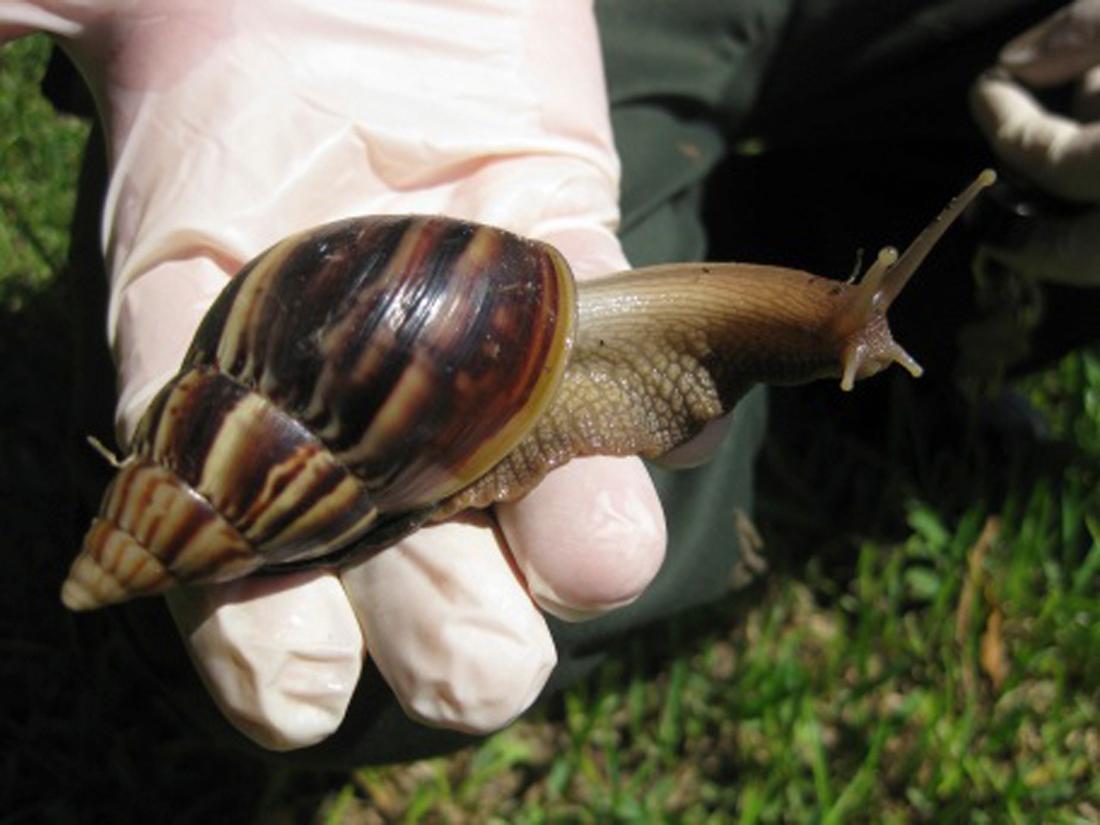Report: Invasive species target islands, coastal areas while upending ecosystems
South Florida is fighting a growing infestation of one of the world's most destructive invasive species: The giant African land snail, which can grow as big as a rat and gnaw through stucco and plaster.
Islands and populated coastal areas are the world's "hot spots" for invasive species, which can upend entire ecosystems and drive local animals and plants to extinction, a study reported Monday.
The first global census of nonnative fauna and flora found the highest concentrations in Hawaii, New Zealand's North Island and the Lesser Sunda Islands of Indonesia.
The 50th US state is beset with alien species — including rats, feral pigs and the firetree, which crowds out indigenous plants — in each of eight categories that include reptiles, fish, ants, spiders, mammals and amphibians.
Disease-bearing mosquitoes that arrived in the early 19th century have wiped out half the island chain's tropical birds, with several other species on the brink.
Florida is the top hot spot among mainland regions, boasting a rogues' gallery of invaders: Walking catfish, giant iguanas, mammal-crushing pythons and monster African land snails that gobble up native plants and carry a parasite that causes meningitis in humans.
The California coast and northern Australia are also rife with uninvited guests.
The new map of intruder species points unmistakably to how they got there, said Wayne Dawson, a biologist at Durham University in northeastern England and lead author of the study published in Nature Ecology & Evolution.
"We have shown that regions with higher human population density, and greater wealth, have more established alien species," he tells AFP.
Not all living things that take root in foreign soils or waters cause harm.
But those that do are among the main drivers — along with habitat loss, hunting for food, pollution and climate change — of wildlife decline around the world, experts say.
Creatures that have evolved in isolation may find themselves helpless against unfamiliar predators or pathogens.
Forests in Guam are eerily silent, for example, because the brown tree snake has devoured most of the island's birds (or their eggs) over the last half century.
Newcomers often marginalize native species: Asian carp now dominate some US rivers, gray squirrels have replaced red ones in London parks and kudzu (aka Japanese arrowroot) — a perennial vine introduced to the US 150 years ago as an ornamental bush — has crowded out many plants.
Altered ecosystems
Benign or not, the overwhelming majority of invasive species are brought to new places by humans.
Sometimes it happens on purpose, for pest control. But attempts to engineer nature can backfire.
Plantation owners in Hawaii imported mongooses to eat the rats that had infested sugar cane fields. But rats are nocturnal and thus continued to thrive. The diurnal mongooses ate ground-nesting birds instead.
More often, invasive critters spread by hitching rides with cargo. The deadly Asian hornet is thought to have landed in Europe a dozen years ago in a shipment of pottery from China. Ballast water in cargo ships pumped in and out of huge tanks to keep vessels balanced is also a major conduit, transporting thousands of aquatic species — including bacteria and viruses — unnoticed across the globe every day.
Under the terms of an international treaty going into effect in September, all big ships will be required to have equipment to treat their ballast water.
"We are arguably creating a new 'Pangaea'," says Dawson, referring to the supercontinent that joined most of Earth's landmasses some 335 million years ago.
"The consequences of such a virtual continent are profound: The creation of novel communities with mixtures of species from around the world, altered ecosystems and extinctions of some species," he tells AFP.
There are also financial impacts.
A study led by French scientists, published last year, concluded that invasive insects alone cause at least $77 billion in damage every year, a figure they described as a "gross underestimate."
For the new study, Dawson and an international team of two dozen researchers looked at data on invasive species across 186 islands and more than 400 mainland regions.
The Center for Agriculture and Biosciences International has cataloged more than 8,000 invasive species, though the true figure is no doubt higher, he said.
